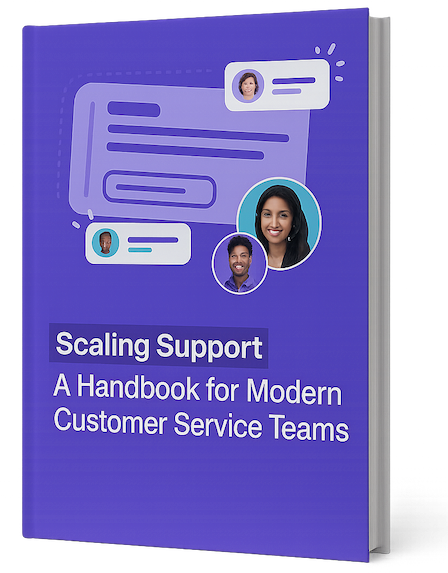When it comes to gathering meaningful information and insights, open-ended questions are an essential tool. Unlike simple yes/no questions, open-ended questions give people the space to share their full thoughts, feelings, and experiences. They help us understand not just what people think, but why they think it. From market research to personal development, this approach to asking questions leads to richer, more useful conversations. Let’s explore how open-ended questions work and look at practical ways to use them effectively.
Why Open-Ended Questions Matter
Good open-ended questions help us understand context and motivation in ways that basic yes/no questions cannot. For instance, asking a customer “What aspects of our product surprised you most?” reveals far more valuable insights than “Were you satisfied with our product?”. This deeper feedback points directly to specific areas for improvement. Open-ended questions also push people to think critically and reflect. When you ask someone “What challenges do you foresee in this project?”, you encourage them to analyze potential issues and actively contribute solutions. This builds engagement and ownership in ways that benefit everyone involved.
Practical Examples of Open-Ended Questions in Action
Open-ended questions prove useful across many different scenarios. Here are some key examples:
- In Market Research: “What factors influence your purchasing decisions?” helps businesses understand consumer behavior and improve their marketing.
- In Customer Service: “How can I help you today?” creates space for customers to explain their specific needs and build better relationships.
- In Interviews: “Tell me about a time you failed and what you learned from it” reveals more about a candidate’s problem-solving and growth than basic qualification questions.
- In Brainstorming Sessions: “What if we tried this approach instead?” sparks creative thinking and new ideas.
- In Personal Development: “What are your long-term goals, and what steps are you taking to achieve them?” prompts helpful self-reflection and action planning.
Examples of Open-Ended Questions vs. Closed-Ended Questions
| Topic | Closed-Ended Question | Open-Ended Question |
|---|---|---|
| Job Satisfaction | Are you satisfied with your current role? | What aspects of your current role do you find most rewarding and challenging? |
| Product Feedback | Did you like the product? | What did you like or dislike about the product, and why? |
| Customer Service | Was your issue resolved? | How would you describe your experience with our customer service team? |
| Event Planning | Did you enjoy the event? | What did you find most valuable about the event? |
| Learning & Development | Did you find the training helpful? | What did you learn from the training, and how do you plan to apply it? |
Using open-ended questions in your daily communications leads to deeper understanding and more productive conversations. Whether you’re gathering customer feedback, conducting interviews, or having important discussions, this approach helps you uncover valuable insights that can inform better decisions and build stronger relationships.
Crafting Interview Questions That Reveal True Potential

Companies are shifting away from standard interview techniques in favor of open-ended questions that provide deeper insights. Rather than just verifying qualifications, these questions help understand how candidates think and solve problems. This approach gives a clearer picture of how well someone might fit into the company culture and contribute to the team.
Why Traditional Interview Questions Fall Short
Basic interview questions about past experience and technical skills don’t tell the whole story. For instance, asking candidates to list which software they know only provides surface-level information. It misses the chance to see how they apply those tools to solve real challenges. Open-ended questions, however, allow candidates to walk through their thought process and show how they handle complex situations.
Examples of Open-Ended Questions for Interviews
Thoughtful open-ended questions can help you better evaluate candidates. Here are some effective examples:
- Behavioral Questions: “Tell me about a time you faced a difficult challenge at work. How did you overcome it?” This reveals how candidates handle setbacks and find solutions.
- Situational Questions: “Imagine you’re leading a project that falls behind schedule. How would you address the situation with your team and stakeholders?” This shows leadership style and communication skills under pressure.
- Values-Based Questions: “Describe a time you had to make a difficult ethical decision. What factors did you consider?” This helps understand a candidate’s principles and judgment.
- Future-Oriented Questions: “Where do you see yourself in five years, and how does this role align with your long-term career aspirations?” This indicates drive and potential commitment to the company.
Adapting Open-Ended Questions Across Industries
While the basics of open-ended questions work across fields, it helps to customize them for specific roles. Instead of asking about general organizational change, you might ask a software developer about adapting to new technologies mid-project. This makes the questions more relevant and lets candidates showcase industry-specific skills.
Practical Frameworks for Interview Success
Experienced HR professionals use a balanced approach when asking open-ended questions. They start with clear goals for each question, connecting them to specific skills they need in a candidate. They also work to create a comfortable environment where candidates feel safe sharing honest experiences and views. This mix of structure and flexibility helps interviewers gather meaningful insights to make better hiring choices. The focus shifts from checking boxes to understanding whether a candidate will grow and succeed within the organization.
Customer Research Questions That Drive Innovation
Good customer research goes beyond basic satisfaction surveys to uncover deeper insights. Companies are increasingly using open-ended questions to better understand their customers’ needs, challenges, and motivations. This deeper understanding helps drive meaningful improvements to products and services.
Uncovering the “Why” Behind Customer Behavior
Most satisfaction surveys tell you what customers think, but not why they think it. For example, knowing that 60% of customers are satisfied with your product is helpful – but understanding why the other 40% are dissatisfied provides much more actionable insights. Open-ended questions help reveal these crucial details that drive real improvements.
Examples of Open-Ended Questions for Customer Research
Asking open-ended questions encourages customers to share their thoughts in their own words, providing rich qualitative data. Here are some effective examples:
- Product Usage: “How do you typically use our product in your daily routine?” This reveals actual usage patterns and highlights unexpected use cases.
- Feature Prioritization: “If you could change one thing about our product, what would it be and why?” This helps focus development efforts on what matters most to customers.
- Pain Point Identification: “What is the biggest challenge you face when using our service?” This pinpoints specific areas needing improvement.
- Surprise and Delight: “What aspects of our service surprised you most?” This uncovers positive elements worth highlighting in marketing.
- Competitive Analysis: “What other products do you consider alternatives to ours, and why?” This helps understand key differentiators.
Transforming Insights into Actionable Strategies
Gathering feedback through open-ended questions is just the first step. The real value comes from analyzing the responses and turning them into concrete improvements. This might involve identifying common themes, mapping customer journeys, or developing detailed user personas. When multiple customers express similar concerns about a feature, for instance, it provides clear direction for product updates.
Building a Culture of Customer-Centricity
Using open-ended questions shows a genuine commitment to understanding and meeting customer needs. This approach builds trust and loyalty over time. Tools like SupportMan can help by creating a direct feedback loop between customers and teams through platforms like Slack. When customer feedback flows smoothly into your workflow, teams can respond quickly and make continuous improvements based on real customer input.
Market Research Techniques That Uncover Hidden Trends

Getting to the root of consumer behavior requires understanding not just what people do, but why they do it. Numbers and data points paint part of the picture, but open-ended questions help us uncover the deeper motivations and perceptions shaping how people make decisions. By asking thoughtful questions, businesses can spot meaningful patterns and opportunities that basic surveys might miss.
Understanding the Nuances of Consumer Behavior
Simple yes/no questions only scratch the surface. For instance, knowing that a customer likes your product tells you far less than understanding exactly what appeals to them about it. Well-crafted open-ended questions encourage people to share detailed responses in their own words. This extra context is especially valuable for spotting emerging trends early – the kind of insights that can help companies get ahead of changing customer needs.
Examples of Open-Ended Questions for Market Research
The right open-ended questions can reveal valuable insights about different aspects of the customer experience. Here are some effective examples:
- Purchasing Decisions: “What matters most to you when choosing [product type]?” This reveals key buying factors like price sensitivity or quality preferences.
- Brand Perception: “How would you describe our brand to someone else?” This shows how your messaging and image come across.
- Unmet Needs: “What frustrations do you face when looking for [product/service]?” This highlights gaps you could fill.
- Future Trends: “What would you like to see in future versions?” This guides product development.
- Competitive Landscape: “What other brands do you consider and why?” This shows where you stand versus competitors.
Analyzing Qualitative Data and Identifying Emerging Trends
The real value comes from carefully analyzing the responses to find meaningful patterns. While working with lots of text feedback takes more effort than numbers alone, the insights are worth it. Common themes often point to unmet needs or emerging opportunities. Looking at the sentiment behind responses adds another important layer of understanding. This rich analysis helps companies make smarter choices about products, marketing and overall direction.
Real-World Applications and Case Studies
Many companies use open-ended research questions to gain deeper customer understanding and competitive advantages. For example, a fitness tracker company might ask “What motivates you to exercise and what gets in your way?” The answers could suggest adding features like community support or personal coaching that really connect with users’ needs. Tools like SupportMan can streamline this process by gathering direct feedback through platforms like Slack. Making customer feedback a regular part of decision-making helps companies stay in tune with their markets and adapt effectively as needs change.
Brainstorming Questions That Spark Creative Solutions
As we’ve explored market research techniques in the previous section, let’s focus on the art of brainstorming and the power of well-crafted questions to drive creative solutions. The right questions can transform an ordinary meeting into a source of fresh ideas and meaningful innovation.
Unlocking Creative Potential: The Role of Open-Ended Questions
Good brainstorming depends heavily on asking questions that spark expansive thinking and discussion. While closed questions that lead to simple yes/no answers can limit exploration, open-ended questions create space for diverse perspectives and unexpected ideas to emerge. For instance, rather than asking “Do you like this design?”, try “What aspects of this design could work better?” This small shift leads to much richer conversations and insights.
Examples of Open-Ended Questions for Brainstorming
The following questions can help turn your next brainstorming session into a productive exchange of ideas:
- Challenge Assumptions: “What if we removed all constraints? What would this look like?” This encourages the team to think beyond current limitations.
- Explore Possibilities: “How might we solve this problem in a completely different way?” This pushes the team to consider fresh approaches.
- Focus on the User: “What unmet needs do our users have? How could we address them differently?” This keeps solutions centered on real user problems.
- Encourage Collaboration: “What ideas does this spark for anyone else?” This builds on different perspectives and creates shared ownership.
- Provoke Deeper Thinking: “What might be the effects of this idea, both good and bad?” This helps refine concepts through critical analysis.
Structuring a Brainstorming Session for Maximum Impact
While brainstorming thrives on spontaneity, a basic structure helps keep sessions focused and productive:
- Clearly Defined Objective: Begin by stating the specific problem or opportunity you want to address. This gives the team a clear target.
- Idea Generation Phase: Use open-ended questions to draw out ideas from everyone. Welcome all contributions, even seemingly outlandish ones.
- Idea Refinement Phase: Build on the most promising ideas with questions like “How could we make this even better?” or “What challenges might we face with this solution?”
- Action Planning: Convert chosen ideas into specific next steps. Set clear responsibilities and timelines to maintain momentum.
By using thoughtful questions and following this structured approach, you can create brainstorming sessions that consistently produce valuable results. Just as research questions guide product development, effective brainstorming leads teams to practical solutions for real business challenges. When done well, these sessions strengthen team collaboration while generating concrete ideas you can put into action.
Implementation Strategies That Deliver Results

Getting real value from open-ended questions takes more than just asking them – it requires careful planning around how and when to use them. In this section, we’ll explore practical techniques to help you design effective questions, time them appropriately, and analyze the responses meaningfully. Understanding these core strategies will help you avoid common mistakes and get the most useful information from your questions.
Timing is Everything: When to Use Open-Ended Questions
The timing of open-ended questions can make or break their effectiveness. For example, starting a customer feedback survey with a broad question like “What was your overall experience with our product?” gives people space to share their initial thoughts freely. This provides helpful context for more specific follow-up questions. However, asking open-ended questions too early in a sales conversation might feel pushy or intrusive.
Pay attention to emotional cues as well. If someone expresses frustration, that’s often an ideal time to ask “What specifically about this process is frustrating for you?” They’ll likely be more willing to elaborate on their concerns, giving you richer insights to work with.
Encouraging Detailed Responses: The Art of Probing
Even well-crafted open-ended questions sometimes get brief, unhelpful answers. That’s where thoughtful follow-up questions come in. If a customer says “The product was okay,” you might ask “What specific aspects made it just okay for you?” This gentle probing encourages them to explain their perspective more fully.
Another helpful technique is to reflect back what you’ve heard. For instance: “It sounds like you found the product easy to use but had trouble with customer support – is that right?” This shows you’re listening carefully while giving them a chance to clarify or expand on their thoughts.
Analyzing the Wealth of Information: Making Sense of Qualitative Data
Unlike yes/no questions that give you clear numbers to work with, open-ended questions create rich but messy qualitative data that takes more effort to analyze. One practical approach is to look for common themes that come up repeatedly. For instance, if multiple customers mention having trouble navigating your website, that clearly points to an area needing improvement.
Pay attention to the emotional tone in responses too – are people generally expressing positive, negative or neutral feelings? This gives you valuable insight into overall sentiment. Tools like SupportMan can help streamline this process by automatically organizing customer feedback so you can focus on understanding and acting on the insights.
Avoiding Common Question Traps
The art of asking good questions requires more than just knowing which questions to ask – it also means avoiding common mistakes that can muddy the waters and prevent you from getting meaningful responses. Professionals at all levels can fall into these question traps, so learning how to spot and sidestep them is essential for conducting effective research and interviews.
The Danger of Leading Questions
One of the biggest pitfalls is asking leading questions that subtly push respondents toward a particular answer. For example, rather than asking “Do you think our product is easy to use?” (which suggests the “right” answer), try “How would you describe the usability of our product?” This neutral wording gives respondents space to share their honest thoughts. Getting feedback free from bias is especially important when collecting customer insights to improve products and services. Tools like SupportMan can help spot patterns in customer responses and identify where leading questions may have skewed the data.
Diving Deeper Than Surface-Level Answers
People often give brief, non-specific responses when discussing complex or sensitive topics. You might hear vague comments like “It’s fine” or “It’s good.” To get to the heart of the matter, follow up with questions that draw out details: “What specifically made it good?” or “Can you tell me more about that?” These prompts encourage respondents to elaborate and share richer insights about their experiences.
Maintaining Objectivity in Questioning
Personal biases can color both how we ask questions and interpret answers. Creating a structured interview guide with pre-written, open-ended questions helps maintain consistency and prevents asking different questions to different respondents. Another useful practice is conducting blind analysis – reviewing responses without identifying information to reduce bias. This approach is particularly valuable in market research where understanding authentic consumer behavior is critical.
Recovering from Questioning Mistakes
Even with careful planning, you may sometimes ask a question that falls flat or confuses the respondent. The key is recognizing when this happens and pivoting gracefully. If someone seems puzzled, try rephrasing the question or providing a clarifying example. For instance, if asking about a specific feature leads to confusion, explain the feature’s purpose in simpler terms. Don’t hesitate to acknowledge confusion – showing this respect builds trust and encourages more open, detailed responses. By understanding these common traps and having strategies to recover from them, you’ll be better equipped to gather valuable insights that drive real improvements.
Ready to make customer feedback easier to manage? Try SupportMan for free today and see how simple it is to integrate feedback right into your Slack workflow!


